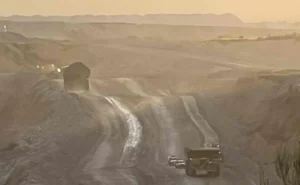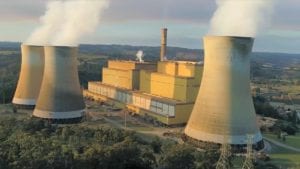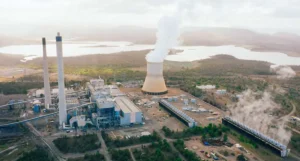Fortescue Metals Group has become one of the first of Australia’s major industrial operators to commit to fully decarbonise its operations and supply chains, including a shift to coal-free steel processing and hydrogen-fuelled shipping.
In a statement released to the ASX on Tuesday, the iron ore giant said it would adopt a net zero target for its scope-3 emissions, meaning the company would look to slash emissions not just from its own operations, but also the embedded emissions in the products it sells to customers.
Fortescue is one of the world’s largest producers of iron ore and crude steel products – and the third largest in Australia – making it one of Australia’s largest coal users.
Around 98 per cent of Fortescue’s scope-3 emissions are related to crude steel production, which traditionally uses coking coal for thermal heat. Fortescue chairman Andrew Forrest has previously predicted there would be no coal-fired blast furnaces in operation by 2050.
The company said it would also look to eliminate emissions associated with shipping its products into overseas markets and had set itself targets to convert its existing fleet of eight iron ore carriers to being fuelled by green ammonia.
In addition to the net zero scope-3 emissions target for 2040, Fortescue will aim to achieve a 50 per cent reduction in the emissions intensity of the shipping of the company’s ores by 2030.
Fortescue will also adopt targets to cut emissions from its steelmaking by 7.5 per cent by 2030 from current levels and 100 per cent by 2040.
Fortescue did not say whether it would need to offset emissions, but it is unlikely that it will be looking to invest in carbon capture and storage technologies, given Forrest’s highly critical and repeated comments about the technology’s failures.
Fortescue CEO Elizabeth Gaines said Fortescue’s shift to using hydrogen as its primary energy source is part of a broader pivot for the company into green energy and reflected the company’s recognition of the opportunities being created in the energy transition.
“Climate change is the most pressing issue of our generation and at Fortescue, setting stretch targets is at the core of our culture and Values and we are proud to set this goal to tackle emissions across our value chain,” Gaines said.
“Fortescue has commenced its transition from a pure play iron ore producer to a green renewables and resources company, underpinned by the world’s first major carbon emission heavy industry operation to set a target to achieve carbon neutrality by 2030.
“This includes the development of technologies and the supply of green hydrogen and ammonia through FFI, which will provide significant opportunities for the steel, cement and land and sea transport industries to decarbonise,” Gaines added.
Fortescue said that supplies of renewable hydrogen from its Fortescue Future Industries spin-off would serve as a key enabler of its decarbonisation strategy, allowing the company to displace the use of fossil fuels in its crude steel manufacturing.
The company has flagged its intention to ramp up its investments in renewable hydrogen production and would look to establish itself as a world leader in sustainable materials.
“Our investments in technologies and research and development are focused on demonstrating that the production of iron ore, cement, iron and steel can operate with renewable energy,” Fortescue Future Industries CEO Julie Shuttleworth said.
“Our work to decarbonise Fortescue’s iron ore operations will position Fortescue as the first major supplier of green iron ore in the world, paving the way for production of green iron and a new green steel industry,”
On Tuesday, an offshoot owned by Forrest, Squadron Energy, secured a $30 million grant from the federal government to progress plans for a new gas fired generator at Port Kembla as part of a proposed gas import terminal at the New South Wales industrial hub.
Forrest has already flagged that it will eventually transition the planned power station to run on renewable hydrogen.
The Australasian Centre for Corporate Responsibility (ACCR) welcomed the commitment to green steel.
The group has been pressuring Australia’s largest producers and users of energy to commit to stronger emissions targets and said Tuesday’s commitment from Fortescue “embarrassed” competitors like BHP and Rio Tinto that have lagged in terms of climate commitments.
“FMG’s bold target overshadows the lack of ambition by BHP and Rio Tinto, whose absence of firm targets for steelmaking is looking increasingly lacklustre,” ACCR’s director of climate and energy, Dan Gocher, said.
“BHP and Rio Tinto should be embarrassed by being outdone by a company they once referred to as a ‘junior miner’. It’s time for BHP and Rio Tinto to set binding targets for their Scope 3 emissions, rather than simply funding research and working with their customers.”
“This announcement is particularly humiliating for BHP, given the impending vote on its climate plan and the valid concerns that proxy advisers have expressed regarding BHP’s lack of action on steelmaking.”










